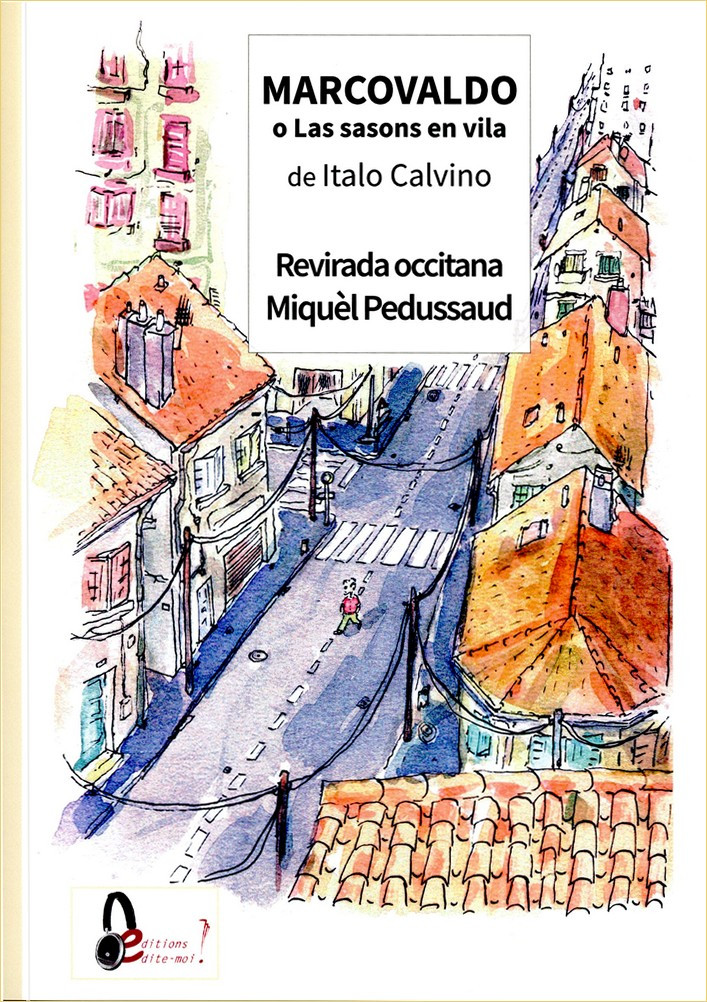
Part of the fun of the novel is waiting to see the way in which Caisotti will defraud Quinto despite the latter’s constant vigilance.

Caisotti is described as a peasant who has made his way down from mountains and has managed to become an important player in the market through sheer determination and unscrupulous practices (à la Duddy Kravitz). He sees the opportunity to sell part of his family’s property to a developer as a way to settle their debts. Quinto comes from a middle class family who is trying to settle their extensive debts owed to the government as part of the country’s postwar estate and wealth taxes. The plot revolves around the struggle between the bookish Quinto and the real estate developer Caisotti. Yet I found myself enjoying the story which has an explicit class dimension usually absent in Calvino’s other work. Smog has some parallels with Calvino’s other excellent novella The Argentine Ant which connects environmental disorder, institutional failure, and social acceptance.Ī plunge into real estate is the longest story in the book (around 90 pages) and returns to a neorealist style the author practised decades early. Like other Calvino male characters, they possess a Hamlet-like psyche that allows them to analyse their situation to a painful level of detail whilst possessing no agency to change events. Our protagonist is disempowered by not only his lover but also the economic system. In order to ensure she has not mistakenly fallen in love with a poor man of no social standing, Claudia refuses to see the narrator for who he is. Our narrator is startled when Claudia calls him in this new city, but he appears resigned to her possessing an omniscience as to his whereabouts. The unnamed narrator is also pursued, literally, by the beautiful and wealthy Claudia who is unsure why he is so evasive to her affections. Calvino was clever to notice these cynical strategies early on. Corporations today have become sophisticated operators at this game through the use of ploys like corporate social responsibility and diversity training. The proprietor of Purification has shrewdly realized that setting the narrative is a cost-effective ways to control the policy agenda. The narrator is resigned to the grime that covers everything in the city and the need to wash his hands from the ever-constant dust accumulating on his hands. The magazine supports technocratic solutions to fight the city’s the ever-present and grimy fog as long as it remains consistent with Corda’s business model and industrial capitalism. The story focuses on a nameless narrator who writes for the magazine Purification, which is owned by a local industrialist Commendatore Corda. It was both prescient for its time, and remarkably suitable for today’s climate change era.

Written a year after Difficult Loves but several years before the environmental movement went mainstream, Smog (1958) is arguably the best novella in the collection. It is also possible that some of variation in quality I perceive is related to my own taste in the prose I enjoy from the author, rather than the work’s actual literary merit. Because Calvino was willing to write short stories throughout his career, there are inevitably ones that will feel below average. I was surprised to discover they were written after The Cloven Viscount and The Baron in the Trees, two shorter novels in which I assumed the author had perfected his craft. The quality of the stories varies my initial impression being that these represented early attempts at Calvino finding his surrealist and post-modern style.

Difficult Loves (1957) comprises of eleven stories that range from a bizarre erotic encounter in The adventure of a soldier to a Calvino-esque battle of the sexes in The adventure of the reader.

The collection of short stories and novellas in Difficult Loves and Marcovaldo spans a good deal of Calvino’s career. Calvino was writing novels and stories up to the point of his untimely death in 1985. The method of Oulipo-constrained writing is most beautifully exemplified in The Castle of Crossed Destinies (1969), in which the stories of the characters are connected in the unfolding tarot card spread. The move to Paris in 1967 gave Calvino a new set of influences including the French New Novel and the Oulipo movement (of which Calvino was a founding member). During the 1950s Calvino’s stories became increasingly fantastic as demonstrated by the heraldic trilogy. His first novel, The Path to the Spider’s Nest (1947) was written in the neorealist mode, being de rigueur of Italian authors in that postwar period. Yet the author’s style also evolved over time. There are certainly elements of the fabulous and absurd. Anyone who reads Italo Calvino will appreciate that his style is both original and difficult to describe.


 0 kommentar(er)
0 kommentar(er)
